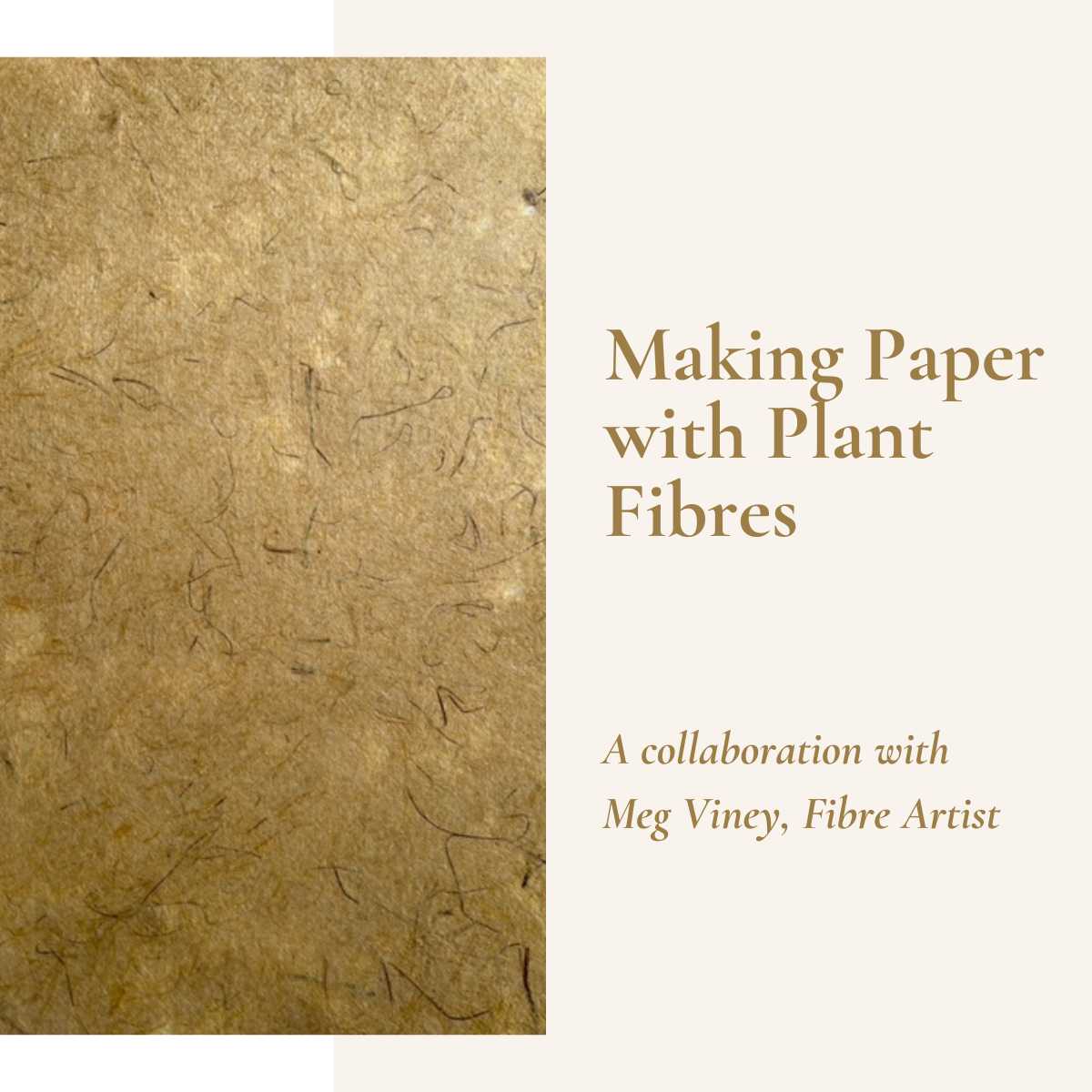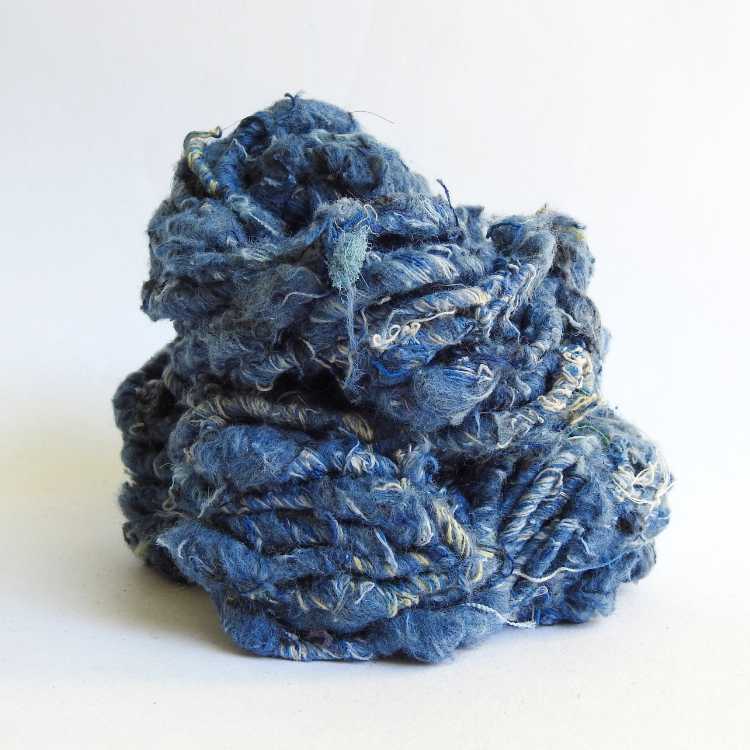How to Make Paper with Raffia and Foraged Fibres
Introduction
Meg Viney is a fibre artist with a deep love of nature and the environment.
Meg quotes "My practice involves a relationship with Nature’s momentum – I find something wonderful in gathering her cast-offs, and, through a number of simple processes, transforming them. The cast-offs that would otherwise decompose are recycled to become new materials, which have a life of their own – thus the beauty inherent in the plant fibre and subtly concealed by the living plant is revealed as new form".
In recent years Meg has developed an increasing interest in plant fibres and their potential to make paper.
Meg has very kindly shared her experience with using raffia as a medium for making paper. References to other plant fibres are also included and we encourage you to experiment!
You can find out more about Meg and her fabulous collection of fibre art on her website, megviney.com.
Why Use Raffia and Foraged Fibres?
Raffia is a natural fibre harvested from the leaves of the raffia palm, which is commonly found in Madagascar and parts of Africa. Known for its strength and flexibility, raffia is often used in crafts like weaving, basket-making, and even fashion accessories. Its long, soft fibres make it an ideal material for a wide range of creative projects.
When it comes to paper making, raffia offers a unique texture and durability that sets it apart from traditional pulp-based papers. Its natural, rustic quality gives the finished paper an organic look, perfect for art, gift wrapping, or handmade stationery. Plus, raffia is an eco-friendly, biodegradable material, which makes it a sustainable option for artists and crafters who are conscious of their environmental impact.
Whether you're new to paper making or an experienced crafter, using raffia adds a creative twist to traditional techniques, allowing you to experiment with texture and fibre content in ways you may not have imagined.
What is Paper?
At its core, paper is a thin, flexible material made from plant fibres, usually wood, cotton, or recycled paper products. These fibres are broken down, mixed with water to create a pulp, and then spread into thin sheets, which are dried and pressed into the final paper product. Paper has been used for thousands of years for writing, printing, and art, and today, it's made in countless ways—from mass-produced sheets to handmade artisanal varieties.
Materials and Tools You Will Need
Gathering Raffia and Foraged Materials
Raffia or foraged plant fibres are all great materials to experiment with as part of your paper making journey.
Any natural material composed of cellulose and able to be reduced to a pulp can be used: the leaves of banana plant, bamboo, red hot poker, cumbungi (river reed/papyrus), Pennisetum grass, flax, hollyhock, artichoke, hibiscus, corn (also the husks).
You can also use the green unusable part of leeks and the peels and cores of quinces (for fabulously textured paper) and all the bulbs (wait until they have browned off and then harvest).
Essential Tools and Supplies
Here are our recommended Tools:
- A mould and deckle (you can make your own - refer picture here)

• - Scissors (knife, secateurs, garden shredder) may be useful for large quantities
- Large stainless steel pot with lid (don't use aluminium as it reacts with the caustic solution)
- Wooden spoon
- Stove top/Heat source (outdoors is ideal if possible)
- Caustic soda (from hardware stores)
- Colander and bucket or similar to strain the pulp
- Newspaper
- Electric blender
- Pouring vessels (eg icecream or yoghurt containers)
- Chux or other cloths for straining the cooked mixture
- Rubber gloves
- For sizing (optional - refer below) - 1/2 teaspoon of gelatine dissolved in 500 ml water
Step-by-Step Guide to Making Paper
A. Preparing the Raffia and FibresChop the fibres in short lengths – very tough fibres (flax and artichoke) about 4 cm long. 6cm length for other fibres. The smaller the pieces the easier they will cook.
B. Creating the Pulp- Ideally soak very tough fibres in water for a few days (this process is called “retting”) in the stainless steel pot
- Place the pan onto the heat source and bring to the boil
- Add 1 - 3 tablespoons of caustic soda to the pan and stir. You may need to experiment with the amount of caustic soda - some fibres (eg New Zealand flax) may need more
- Simmer for 1 or more hours. When done the fibre will feel soft and slimy (use rubber gloves). Start test for the “slimy result” after 1 hour and keep cooking until achieved
TIP: to get an idea of how the paper will work, at any stage take a pinch of pulp and squeeze it between chux to dry before making a whole sheet
- Strain the pulp through the colander atop a bucket (netting may also help here). Tip: pour the hot "caustic" water over weeds or neutralize with vinegar
- Wash the fibres in the colander and then process them in the blender. Use about 1 cup of fibre to 3 cups of water and start to process - slowly at first - until you have a fine pulp
- Pour the pulp into a container and continue with the remainder of the "cooked" fibre
- Place a chux over the base of the mould and deckle. Pour the pulp (suspended in plenty of water) through the chux, using a shaking movement to allow an even flow, until the mould is covered. The chux prevents the pulp getting stuck in the wire mesh of the mould
- Cover with another chux, gently squash out excess water
- Remove the deckle and then couch the sheet of paper onto newspaper and cover with more newspaper
- Continue the process until you have made as many sheets as you want.
- Keep changing the wet newspaper for dry newspaper to hasten the drying process.
- Once dry, you can press with something like an Elna press
- You can also size the paper by painting with gelatine/aluminium powder mixture if desired (the sizing seals the surface so that you can use pen/ink without it running)
Want to read more about Paper Making?
There is so much more to know about making paper. For more information about paper making or it's fascinating history, check out your local library or a bookseller.
Thank You
Sincere thanks to Meg Viney for providing her expertise for this guide. Be inspired by more of Meg's fabulous work at megviney.com. If you have specific questions re the process Meg welcomes you to contact her via email vineymeg10@gmail.com.
We hope this inspires you to get out there, forage some lovely plant fibres and start experimenting with making your own beautiful paper full of texture and natural colour x




